Peterbald. Sokoke. Minskin.
Ring any bell?
These are cat breeds—rare cat breeds.
While most of us feline lovers can promptly recognize popular cat breeds such as Siamese, Persian, and Domestic short-haired cats, not many of us are familiar with rare cat breeds, few of which were named in the beginning. Our unfamiliarity with these rare cat breeds is totally understandable—we do not get to see much of these cats. Actually, these cats are minority cat breeds in the United States, meaning that very few of them are present in America as compared to other commonly found cats.
Rare Cat Breeds
Every feline lover thinks that their furry fella is the rarest in the world.
Well, we are not saying that your beloved feline friend is not unique—she surely is a one in a million, and there is no cat like her. What we are assuming is that your cat does not fall among the minority cat breeds in America.
Purebred Cats Are Rare
If your cat is purebred, you can take the above statement of your cat being one in a million literally. Because purebred cats are quite rare—they only make up to 2 percent of the total cat population. Given that around 98 percent of cats fall outside the category of purebred cats, it is quite hard to find a purebred cat. Most domestic cats have no purebred cats in their entire family tree.
There is nothing to get concerned about if your cat is not purebred. Purebred cats like Scottish Fold are more prone to developing serious health issues that make their lives difficult.
If you are planning on bringing a new feline fella in your life and you want it to be rare—literally speaking—below is a list of the rarest cat breeds.
Korat
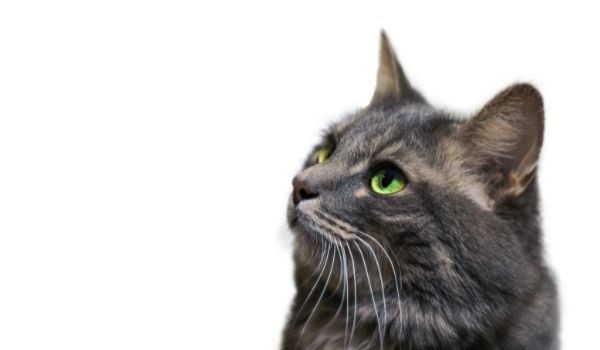
Need a good luck charm? Get yourself a Korat.
Korats are nicknamed “Good Luck Cat” due to their association with good luck, which supposedly increases if Korat happens to have a kink in the tail.
Originating from Thailand, Korat is one of the oldest and purest cat breeds. There is no substantive evidence about the lineage of Korat, and when this cat breed was domesticated is also unknown. However, according to the Cat-Book of Poems, Korats were bred in the fourteenth century. Korat is recognized as a national treasure by the Thai government.
They were first brought to America in the 1950s by a returning couple, and later American soldiers serving during Vietnam War brought more Korats to the US. But it was only in 1966 that they gained the championship status from the Cat Fancier Association (CFA).
Korats are known for their intelligence—they are capable of learning to communicate by making expressive sounds and can also open cabinet doors with their paws. They have a muscular body and luminous green eyes. As of 2018, Korat’s CFA rank number was 40.
Peterbald Cat
Also known as Russian Peterbald, this cat breed originated in Russia—bred by Olga S. Mironova by the crossbreeding of hairless Donskoy cat with Oriental Shorthair. The unique feature of these cats is their lack of hair—they have no body hair, eyebrows, or whiskers. Another unique feature of Peterbald is their coat, which changes significantly during the first two years of their lives—altering, gaining, or losing hairy texture.
Due to their hairless coat, you do not have to worry about combing or brushing them. However, you will have to give them weekly baths to clean the oil from their skin, preventing them from attracting dirt.
We know weekly baths may sound challenging, but that is not the case when it comes to bathing Peterbalds. In fact, it is the other way round—bathing a Peterbald is fun. Unlike other cat breeds, they are not afraid of water. However, they get cold immediately, and you would need to keep them indoors in warm and cozy places.
Sokoke
The story of the origin of the wild-looking Sokoke cat breed, also known as Sokoke Forest cat, began in 1977 in the Sokoke district of eastern Kenya, when Jeni Slater, a Kenyan wildlife artist, discovered a litter of kittens with unique marking. She domesticated a male and female kitten from the litter and started breeding them. Later, Gloria Moldrup acquired a pair of Sokoke cats from Jeni and took them to Denmark, where the breed became popular and was further developed.
They love their owners but do not mistake them for a cuddly lap cat. They don’t like to be hugged or snuggle with their owners. Instead, they show their love by tailing you around the house. They have an active lifestyle, so bring them home only if you can provide them quality interactive play sessions. Unlike most cats, Sokoke Forest cats love to swim and enjoy their bathing sessions.
Chartreux
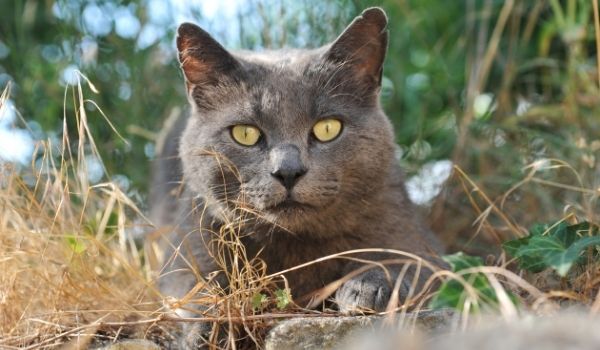
There is not much evidence about the origin of this cat. However, it is widely believed that Chartreux originated in the Middle East, in present-day Syria, from where it came to France with the Crusaders. It was brought to the US only in 1971, and by 1987, it had earned the status of the championship from the CFA. As of 2018, it had the CFA rank of 34. This a minority cat breed not only in the US but also in Canada as there are only a handful of active Chartreux breeders.
Chartreux cats not only bond with their owners—jumping and snuggling in laps and following them around in the house but are also generous in giving some affection to others. Their males are larger in size than their females. Chartreux are very agile and active cats. They not only make great traveling companions but also love to play interactive games like fetch with their favorite humans.
They also love to climb. They won’t even feel guilty about climbing on things and maybe breaking a thing or two. So, bring them home only if you won’t have any issue with them climbing on bookshelves, doors, and trees.
Burmilla
Today, we have Burmilla cats thanks to the accidental mating of female Burmese with male Chinchilla in 1981. They are a lot like Burmese cats, except they have a silver coat. These cats have very striking eyes, green in color, with black lining, as if they are wearing eyeliner. As of 2018, Burmilla had the CFA rank of 39.
Burmillas are loyal and devoted cats. They are attention seekers and love belly rubs and caressing. They love to play interactive games of fetch with their owners. However, when it comes to strangers, they take their time in adjusting to their presence. An unfortunate fact about Burmilla is that they are prone to Polycystic Kidney Disease, which may lead to the development of renal failure.
Turkish Van
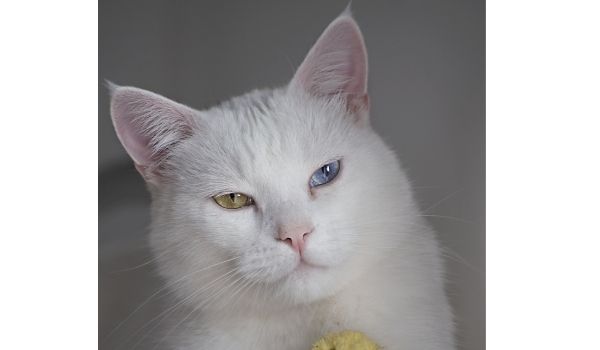
You might have watched them swimming in YouTube videos. Turkish Vans love to swim and therefore are nicknamed “The Swimming Cat.”
This cat breed originated in the region now consisting of Iraq, Iran, eastern Turkey, and southwest Russia. The first Turkish Van arrived on the shores of America only in 1982. Today, this breed is recognized not only by the CFA but also by The International cat Association (ICA). As of 2018, the CFA rank of Turkish Van was 44.
Turkish Vans are loaded with energy, always ready to play games with their owners, often preferring playtime over lap-time. They also sleep a lot lesser than their feline mates. These are highly intelligent cats and are very easy to be trained.
Turkish Angora
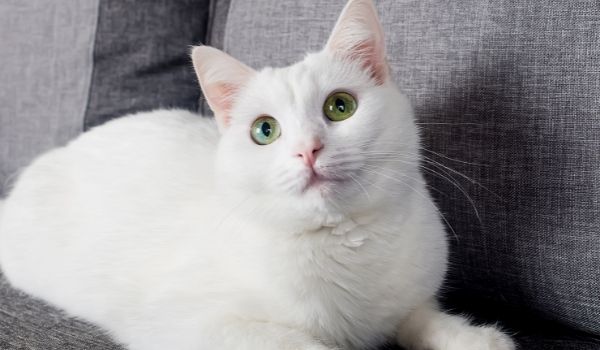
The naturally occurring breed, Turkish Angora, takes its name from the capital city of Turkey, Ankara, which was previously known as Angora, where it originated centuries ago. With the fears of extinction of white Turkish Angora, in the 1900s, the Turkish Government and the Turkish zoo joined hands for its preservation by initiating a careful breeding program. Arriving in the United States in 1963, White Turkish Angora experienced an explosion of popularity and was fully recognized by the CFA in 1973.
Turkish Angora has the grace of a ballerina. They have a long body with a lengthy tail, a long-hair coat, thin legs, large ears, and wide almond-shaped eyes. Their coats don’t remain thick throughout the year; instead, their length is dictated by the changing seasons—in warm months, the hair grows thin, and as winter approaches, the hair starts to grow thicker and longer. In warm months, your Angora cat would look like a shorthair cat. They make a perfect family pet as they get along not only with their owners and their children but also visitors.
American Wirehair
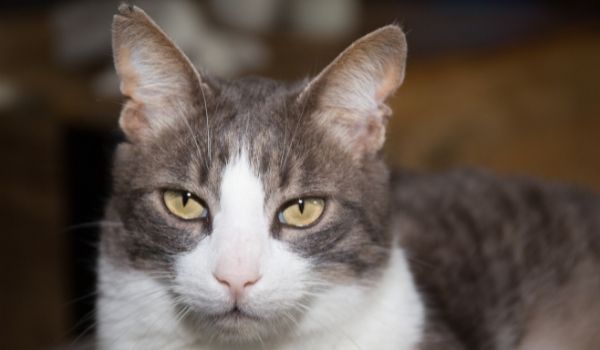
American Wirehaired cat breed is relatively quiet young. The first kitten of this rare cat breed was born in 1966, in Verona, New York, in a barn on the Council Rock Farm. The following year, the CFA granted registration rights to the American Wirehair as a separate cat breed. A decade later, in 1978, it achieved the CFA championship status. The lower number of registered American wirehaired cats makes them one of the rarest cat breeds.
These cats are very easy to live with. They make a perfect choice for those who have other pets living under the same roof and often have visitors as well, as these cats not only get along with other pets but are also comfortable around strangers.
Havana Brown

Don’t be fooled by its name. Havana Brown was developed not in Havana but in England in the 1950s. There are certain theories about where the name of the cat came from, including the theory that it came from the chocolate-colored Havana cigars, but one thing is sure that the breed was not developed in Cuba. It resulted from a crossbreeding program of Siamese, Russian Blue, and domestic shorthairs. It achieved the status of the CFA championship in 1964. As of 2018, it was ranked 42 on the CFA’s most popular cat breeds.
This mahogany-toned brown-colored coat of Havana Brown cats melt the hearts of the viewers. On top of their unique brown coat, their loveable and adaptable personality also contributed to their increasing popularity. They love nudging their owners with their paws and are always ready to play fetch games. Havana Brown cats make a perfect choice for avid travelers. These cats quickly adapt to the traveling routine of their owners and are always ready to accompany their owners on planes, cars, and boats.
Minskin
This is a young cat breed, developed around two decades ago in Boston by Paul McSorley. The Minskin cat resulted from the crossbreeding of Sphynx with Munchkin. The first standard Minskin cat was produced in 2000, and this late entry into the feline world has earned them a place on the list of rare cat breeds.
The cat breed is not yet recognized by cat associations. However, it seeks recognition from The International Cat Association and other registries of considerable authority and stature. Due to their fewer numbers, Minskin cats are considered one of the rarest cat breeds.
Minskins are small cats with round heads and large round eyes. It is one of those cat breeds that retain their kitten-like appearances into their adulthood. If you are a fan of kittens, you should definitely get yourself a Minskin. But given their rarity, it might be hard for you to find one. They make an ideal pet for families with children, senior citizens, and other pets.
After reading about these rare cat breeds, you might go anxiously looking for one. But before you go, you should know that these cat breeds are quite rare, so it might be pretty hard to find one. If you are lucky, you might get one, but if it’s not your lucky day, maybe you should look into long-living cat breeds.
